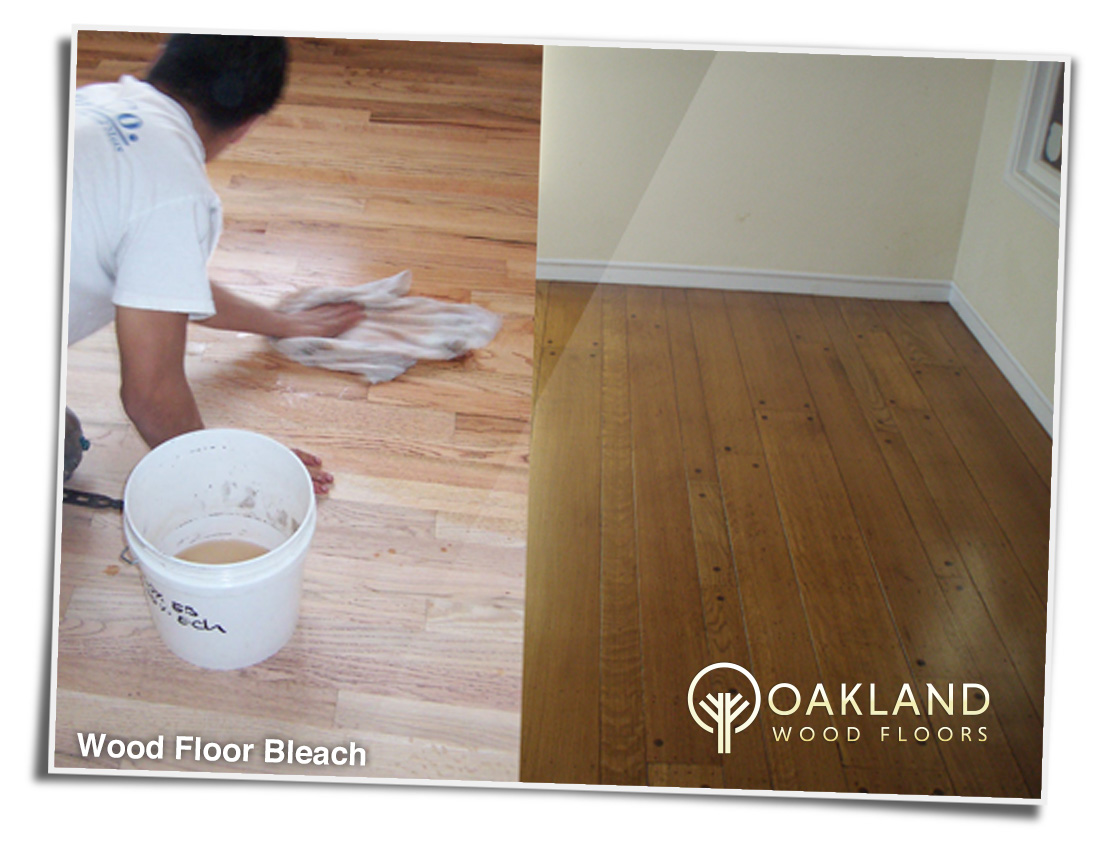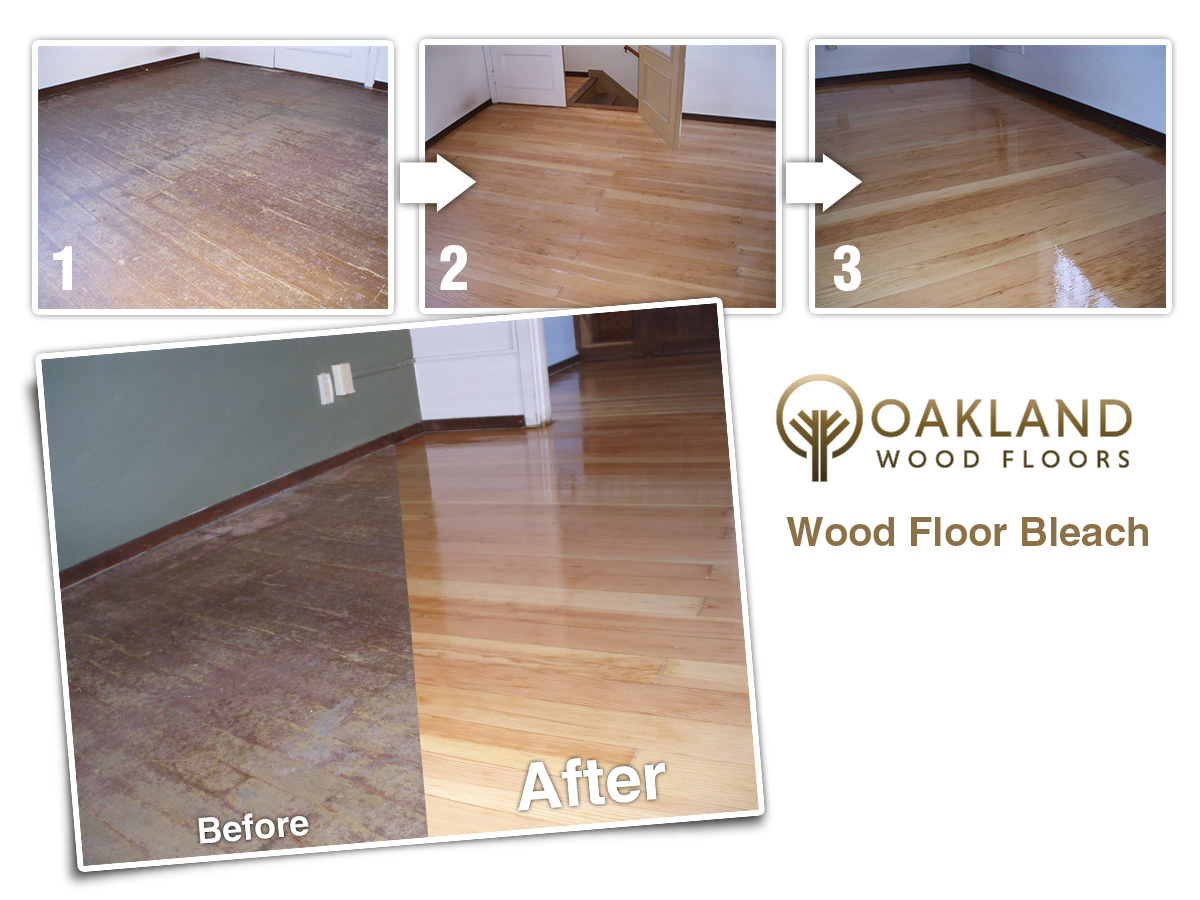TYPES OF BLEACHES
There are three types or categories of bleaches used for bleaching wood floors. peroxide or bleaches known as "two-parts", chloringe bleach and oxalic acid. Which one you use depends on what colors you are trying to remove. The hardest part is selecting the right bleach for the stain you need to remove. The best way to figure out what will work best is to know what made the stain in the first place.
Peroxide Bleaches on wood floors
Peroxide bleachs are sold as A/B bleaches or as two part bleaches. There are two parts to the bleach. Sodium hydroxide and a strong hydrogen peroxide make the compound. Alone the compoinents do little but together they are very strong and have a oxidinging reaction that almost always removes the natural color in wood. They can at time also lighten a few pigments staings but they do nothing to dye Stains.
Chlorine Bleaches on wood floors
Chlorine is one of the strongest oxidizers that is sure to either remover or significantly lighten dye stains. Sometimes a chlorine based bleach like Clorox can work but it takes so many applications that it is not that effective. You could try a stronger solution made from pool bleach also known as calcium hypochlorite. It can be purchased from swimming pool supplies retailer and is inexpensive making it a great choice.
Oxalic Acid on wood floors
Oxalic Acid will remove certain stains formed when iron and moisture come into contact with tannic acid in the wood. Woods like oak, cherry and mahagany naturally contain a high amount of tannic acid and a clack stain in formed when the wood gets wet with tap water since tap water contains iron. If tap water like a leaky faucet or a plant over watered creates a water stain. It will produce a black stain in the wood.
Oaklic acid is also used frequently to lighten the graying effects of outdoor exposure. When you see deck cleaners or "brightners" those are filled with Oxalic Acid and can be used to re establish an even tone to wood.
USING BLEACHES on wood floors
The goal of bleach is to remove color that you want and nothing around it making a selective removal of color. For the most part you will need to experiment to get the right formula for removing the stain. This is especially true if you do know know where the stain came from or what it is made from. Take proper precausions such as gloves and a dust mask and safety glasses when working with chemicals such as Bleach.

Lightening Wood on wood floors
Use two-part peroxide bleaches also known as "A/B" bleaches when you want to remove the natural color of wood. These two part bleaches are sold in most paint and hardware stores. Be careful, don't use too much colorr of wood because these two part bleaches will remove all the color given the chance. Over bleached wods will not have tone variation that are needed to make them beautiful even after staining. Some woods, like walnut, if over bleached will get a green haze to them. To try to avoid this apply the bleach evenly and sparingly.
Color Removal on wood floors
Chlorine bleaches are great for removing dye based stains this bleach is that it will remove or lighten the dye without affecting the natural color of the wood. Keep in mind that chlorine dyes are for the most part ineffective on pigment based stains.
Stain Removal on wood floors
First determine what made the stain you can remove it with the correct bleach.
Iron based stains are grayish-black and usually ring shaped. It may also show up as a splotchy appearance on oak that has been stripped.

